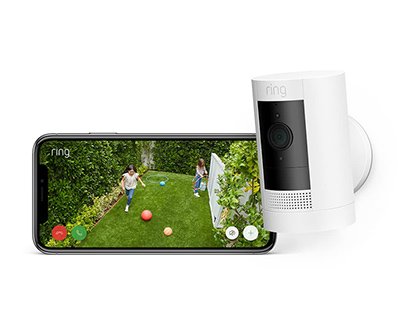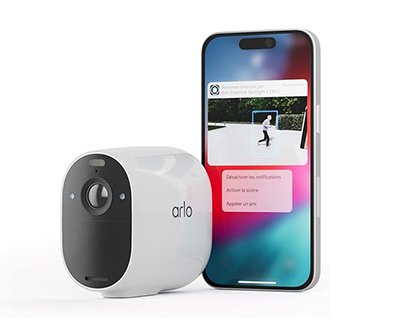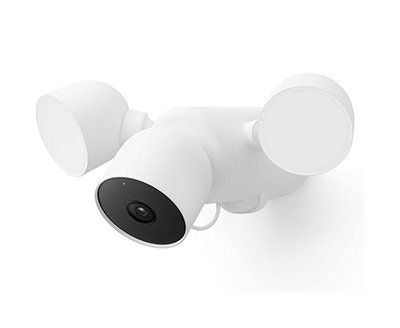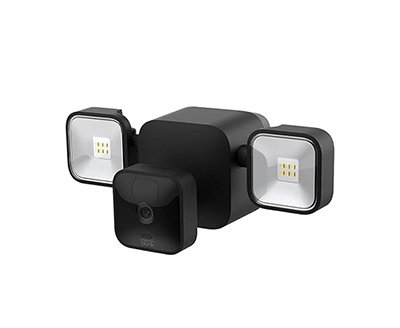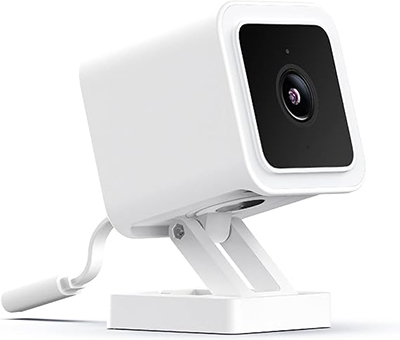What Is Field Of View And Why It Matters
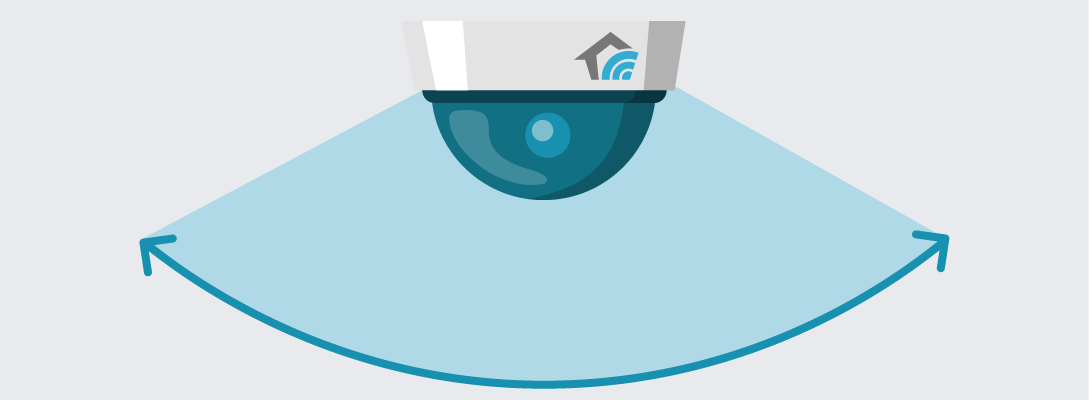
The field of view (FOV) in CCTV systems is much more than just a technical spec; it's the very lens through which security teams capture the critical details. Choosing the right FOV for each camera placement is an art, a strategic decision that can make or break the effectiveness of the entire system. A wider FOV offers expansive coverage, ideal for sweeping panoramas but sacrificing detail. Conversely, a narrow FOV zooms in on specific areas, pinpointing activity but leaving peripheral zones vulnerable.
Mastering this balancing act is key to CCTV excellence.
Optimising FOV across installations maximises coverage, ensuring no vital areas remain shrouded in blind spots. Strategically placing narrow-FOV cameras at entry points or sensitive zones allows for clear identification of individuals and events, while wider FOVs monitor larger spaces, capturing the bigger picture. This layered approach creates a comprehensive security tapestry, woven with both broad awareness and focused scrutiny.
The result? Fewer missed incidents, faster response times, and a proactive security posture that can deter crime and ensure the safety of people and property.
Introduction
Field of view, or FoV, in CCTV systems essentially defines the area a camera "sees." It's the angle between the furthest points visible on either side of the lens, like a slice of the world captured by the camera's eye.
Choosing the right angle for each camera placement determines how much ground it covers, how much detail it captures, and ultimately, how effective it is in detecting critical events. A narrow FoV might zoom in on a specific entrance, ensuring clear identification of individuals, while a wider FoV might monitor a whole hallway, providing broad awareness.
Optimising FoV across your system ensures no vital areas are blind spots, while strategically placing cameras with different angles creates a layered tapestry of both detailed scrutiny and expansive oversight.
Factors Influencing Field Of View
Camera Placement
The location of your camera significantly impacts its field of view. Mounting a camera higher increases its coverage area but reduces detail. Conversely, a lower placement offers focused scrutiny but sacrifices broader awareness.
You should also consider the angle: Tilting the camera can adjust the field of view vertically. This is vital for covering specific zones like hallways or stairwells without capturing unnecessary areas. Tilting downwards minimises glare and captures activity closer to the ground.
The closer the camera is to the target area, the narrower the field of view and the sharper the detail. Conversely, greater distance offers wider coverage but sacrifices detail. Find the best placement for each scenario: a camera near an entrance needs clear facial recognition, while one monitoring a perimeter needs broader coverage.
Camera Lens Types
The lens is the window to the world for your camera, and its type heavily influences the field of view:
- Fixed Lenses: These offer a specific, unchangeable field of view, ideal for situations where coverage needs are well-defined. They provide excellent image quality and are cost-effective.
- Varifocal Lenses: These offer adjustable focal lengths, allowing you to zoom in or out, effectively changing the field of view on the fly. This is perfect for situations where coverage needs may vary, like monitoring both a wide lobby and specific entry points.
- Fisheye Lenses: These offer ultra-wide, almost 360° field of view, eliminating blind spots but with significant image distortion. Use them strategically for expansive areas where detail is less crucial, like large open spaces or warehouse floors.
Environmental Considerations
Low light can significantly reduce the camera's effective field of view. Consider supplemental lighting for crucial areas, particularly at night. Rain, snow, and fog can further obstruct the view. Opt for weatherproof cameras and lens covers for consistent coverage.
Walls, foliage, and even furniture can create blind spots. Strategically place cameras to minimise obstructions and consider panoramic cameras for areas with complex layouts.
Combine camera types and placements to cover blind spots. Utilise digital pan-tilt-zoom (PTZ) cameras for remote adjustments. Regularly clean lenses and maintain equipment for optimal performance.
Remember, it's not just about seeing more, but seeing strategically, with clarity, and without compromise.
Types Of Field Of View
When it comes to CCTV, "field of view" (FOV) isn't just a single value; it's a multi-dimensional tool for ensuring comprehensive surveillance.
Horizontal FOV
The horizontal FOV is the angle across which the camera captures events on a horizontal plane. A wide horizontal FOV offers panoramic coverage, ideal for monitoring long hallways, parking lots, or open spaces. But this panoramic view comes with a trade-off – detail diminishes across the captured area. For situations demanding facial recognition or identifying specific activities, a narrower horizontal FOV is crucial. Think monitoring an ATM or a cash register; a focused view prioritises clarity over expansive coverage.
Vertical FOV
The vertical FOV refers to the angle capturing events on a vertical plane. Consider it your camera's ability to "see" from ceiling to floor. A wide vertical FOV is vital for covering tall spaces like lobbies or stairwells, ensuring no suspicious activity goes unnoticed, like someone climbing over a fence or scaling a wall.
Excessive vertical FOV can lead to wasted resources. Monitoring a hallway doesn't need to capture the ceiling fan or floor tiles. A narrower vertical FOV optimises resources by focusing on the relevant zone, like the walking area or doorways. Designing your system with vertical FOV in mind ensures efficient coverage without capturing unnecessary details.
Diagonal FOV
Diagonal FOV combines the horizontal and vertical angles, offering a more nuanced understanding of the camera's coverage. It's particularly useful for situations where objects or activities move diagonally, like someone entering a room or crossing a corridor.
A narrow diagonal FOV works well for tracking specific entry points or monitoring activities on stairways. Conversely, a wider diagonal FOV is advantageous for open spaces where movement can occur across various angles.
Remember, diagonal FOV doesn't replace horizontal and vertical views; it complements them by providing a holistic picture of the camera's "vision cone".
How To Calculate FOV
Calculating the field of view (FOV) is crucial for tailoring your CCTV system to specific needs. Here’s how:
Step 1: Gather the Essentials
- Focal Length (f): Measured in millimetres, it's the distance between the camera's lens and the focal plane (sensor).
- Sensor Size (S): Typically, the diagonal length in millimetres of the camera's image sensor (e.g., 1/2.5", 1/3").
- Sensor Format: The aspect ratio of the sensor (e.g., 4:3, 16:9).
Step 2: Choose Your Formula
- Horizontal FOV: Horizontal FOV (degrees) = 2 * arctangent (Sensor Width / 2f)
- Vertical FOV: Vertical FOV (degrees) = 2 * arctangent (Sensor Height / 2f)
Step 3: Crunch the Numbers
Let's work through an example:
- Camera: Focal length 3.5mm, Sensor size 6.17mm (1/2.5"), Sensor format 4:3
- Horizontal FOV: (2 * arctangent (6.17 / (2 * 3.5))) ≈ 81.9°
- Vertical FOV: (2 * arctangent ((6.17 * 3) / (2 * 3.5 * 4))) ≈ 61.5°
Variations and Considerations
- Fixed Lenses: Use the above formulas to calculate a fixed FOV for your chosen camera setup.
- Varifocal Lenses: These offer adjustable focal lengths, requiring recalculating the FOV with each adjustment.
- Sensor Sizes: Larger sensors capture wider FOVs at the same focal length compared to smaller sensors.
- Distance to Target: FOV calculations assume the target is at an infinite distance. For closer objects, the actual FOV will be slightly wider.
- Environmental Factors: Obstacles and weather can impact the effective FOV.
Beyond the Numbers
While calculations provide a starting point, remember:
- Consider your surveillance goals: Do you need broad coverage or focused detail?
- Plan your camera placements: Utilise FOV calculations to avoid blind spots and optimise coverage.
- Test and adjust: Fine-tune camera positions and FOV settings based on real-world scenarios.
By understanding and applying these calculations, you can confidently design a CCTV system that meets your specific security needs. Remember, FOV is just one piece of the puzzle; combining it with strategic planning and informed decision-making will transform your CCTV system from a passive observer to a vigilant guardian of your space.
Optimal Field Of View For Specific Applications
Retail Environments
In a retail setting, you need an eagle eye on both customers and merchandise. Aim for a wider horizontal FOV to cover long aisles and entrances, around 90-120 degrees. Use fixed or varifocal lenses with narrower FOVs for key areas like cash points or display cases. Camera placement is crucial – angle cameras to cover blind spots near shelves and consider fisheye lenses for expansive overviews. Remember, strike a balance: wide FOV for general coverage, targeted FOV for crucial zones.
Traffic Monitoring
Keeping roads flowing smoothly needs a different approach. Here, a narrower horizontal FOV around 30-60 degrees per lane is ideal for focusing on individual vehicles and identifying licence plates. Capture a wider vertical FOV to encompass tall trucks or overhead signs. Consider PTZ cameras for zooming in on specific incidents or suspicious behaviour. Advanced setups featuring multiple cameras with overlapping FOVs can create a seamless, comprehensive traffic picture. Prioritise lane-by-lane detail over expansive views.
Residential Surveillance
Home security demands a delicate balance between vigilance and privacy. Aim for a narrower horizontal FOV (around 60-80 degrees) focused on entry points like doors and windows. This avoids capturing unnecessary details of public spaces while deterring potential intruders. For larger properties, consider varifocal lenses to adjust FOV for specific areas. Don't forget blind spots like back gardens – strategically placed cameras with wider FOVs can cover them without infringing on neighbours' privacy.
Our Top DIY Security Camera Picks With Great FoV 2025
Best for Panoramic Views: Ring Outdoor Camera Battery (Stick Up Cam)
Ring Stick Up Cam is a weather-resistant camera that can be used indoors or outdoors. The camera also has a pan-tilt mount, which allows you to control the camera's direction using the Ring app. This means that you can get a 360-degree view of your surroundings, which is great for security. A generous 130° horizontal, 110° FOV lets you monitor entrances, driveways, and even large gardens with ease. Think panoramic views that keep potential intruders nowhere to hide.
Main Features:
- Two-Way Talk
- Weather-Resistant
- Flexible Power Options
- Smart Integrations
The camera is for sale on Amazon.co.uk for £59.99.
Best For Large Properties: Arlo Essential Security Camera
Arlo’s impressive 130° horizontal and 110° vertical field of view rivals the Ring, letting you keep tabs on large properties or multi-task with a watchful eye on multiple areas. Instant motion alerts keep you in the loop, sending real-time notifications to your phone the moment activity pops up, while colour night vision ensures clear details even in the dark, helping you identify potential threats. The camera seamlessly integrates with your existing smart home setup thanks to compatibility with popular platforms like Google Assistant and IFTTT. This camera offers peace of mind with a touch of convenience, making it a smart choice for proactive home security.
Main Features:
- 130° horizontal, 110° vertical FOV
- No messy wires or power outlets
- Instant Motion Alerts
- Colour Night Vision
- Smart Home Compatibility with Google Assistant and IFTTT
The camera is for sale for just £78.90 from Amazon.co.uk.
Best For Illuminating Dark Areas: Google Nest Cam with Floodlight
This security camera boasts an impressive 130° horizontal and 110° vertical field of view, ensuring expansive coverage. Bright floodlights bathe the monitored area in illumination, leaving no corner shrouded in shadows.
But its capabilities extend beyond mere visibility. AI-powered smart detection differentiates between people, animals, and vehicles, minimising the annoyance of false alarms and keeping your focus on genuine security concerns. You can even customise lighting routines, scheduling the lights to turn on automatically at specific times or upon motion detection, adding an extra layer of deterrence and convenience.
Never miss a beat with 24/7 monitoring in crisp 1080p HDR video, regardless of the time of day or night. And for added peace of mind, the camera offers local storage options on a MicroSD card, providing data privacy and redundancy in case of internet outages.
Main Features:
- 130° horizontal, 110° vertical FOV
- Smart AI-powered Detection
- Customizable Lighting Routines
- 24/7 Monitoring
- Local Storage Option
The camera sells for £249.95 (Alexa not included).
Best For Customisable Views: Blink Outdoor + Floodlight
This versatile security camera offers both broad awareness and focused attention thanks to its impressive 130° horizontal and 110° vertical field of view. Get a general sense of your entire property, while customizable motion detection zones let you zero in on key areas like doorways or walkways, ensuring you're only alerted to what truly matters.
But security goes beyond just seeing. This camera packs a punch with its 700-lumen floodlight, deterring unwanted visitors and illuminating your property with a bright burst of light triggered by motion. Plus, battery-powered convenience eliminates the hassle of finding power outlets, making it ideal for even the most remote locations.
Footage is securely stored directly on the camera's built-in 2GB storage, with the option to expand to cloud storage for added peace of mind. And to give you a chance to experience its full potential, the camera comes with a free 30-day trial of the Blink Subscription Plan, granting access to features like cloud recording and extended warranty. After the trial, the subscription remains affordable, ensuring you get the most out of your security investment.
Main Features:
- FOV of 130° horizontal, 110° vertical
- Customisable motion detection zones
- 700-Lumen Floodlight
- Battery-Powered Convenience
- Local Storage
- Free Trial and Affordable Subscription
The Blink camera can be bought for £62.49.
Best For Narrow Focus: Wyze Cam v3
While some cameras boast expansive views, this one prioritises laser-sharp focus on crucial locations. Its 110° horizontal and 100° vertical field of view might be slightly narrower, but that translates to exceptional clarity and detail in specific areas like entrances, porches, or garages. Imagine monitoring your doorway with the precision of a hawk, capturing every nuance thanks to the innovative Starlight Sensor and f/1.6 aperture. Even the deepest shadows reveal their secrets in stunning colour, leaving no room for guesswork when it comes to security.
But versatility isn't sacrificed for focus. This camera thrives both indoors and outdoors, adapting its FOV to your specific needs. Whether you're safeguarding your living room or keeping an eye on the backyard, you can tailor its watchful gaze to fit your security blueprint.
Choose between optional local storage on a MicroSD card or cloud storage subscription to ensure you never miss a beat, day or night.
Main Features:
- FOV: 110° horizontal, 100° vertical
- Superstar Night Vision
- Indoor/Outdoor Versatility
- Continuous Recording
- Smart Home Integrations
The Wyze Cam v3 is for sale from £59.95.
Conclusion
Field of view might seem like a technical detail, but it's the very lens through which your security system perceives the world. Choosing the right one for each camera placement is a strategic art, shaping the effectiveness of your entire system. Do you have questions about your specific security needs? Want expert advice on choosing the perfect camera setup for your property? Contact Security Alarms today!
If you are considering setting up an alarm system (including burglar alarms with home security cameras), don’t hesitate to contact us. We provide UK coverage and will be happy to give you a free no-obligation quote.
